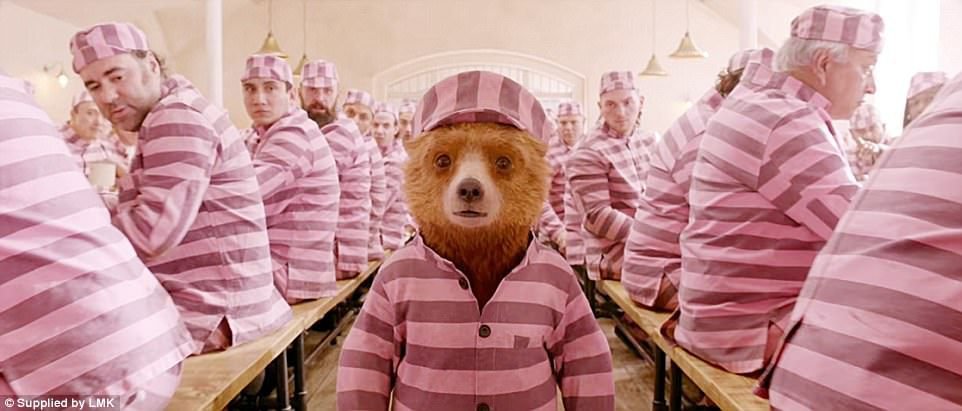-
Posts
50 -
Joined
-
Last visited
About M_Williams

Profile Information
-
Gender
Male
-
Location
USA
-
Interests
Photography. Filmmaking. Small dogs that look like old men. Paul Newman and Jeff Bridges. Vintage Cameras and Lenses.
Working up the nerve to ask Zeiss to marry me. -
My cameras and kit
Nikon Z 7II, Olympus E-M5 III & E-M1X, BMPCC4K & 6K Pro, SLR Magic Microprimes, DZOFILM Cine Zooms
Recent Profile Visitors
2,155 profile views
M_Williams's Achievements

Member (2/5)
51
Reputation
-
 kye reacted to a post in a topic:
THE Big Question
kye reacted to a post in a topic:
THE Big Question
-
This is interesting, but personally, I think it's a stupid way to approach this. Yes, make it sound best for the theatres, but the film won't be in theatres forever. A lot of people are going to watch it at home - probably most people will watch it at home over the course of X number of years. But, more importantly, this is really a problem exclusive to Nolan. When I was the TDKR opening scene preview before Mission Impossible: Ghost Protocol (in IMAX at Universal) I couldn't understand 80% of what Bane was saying. I think they went back after a lot of the complaints and remixed it, because it was better in the full release. I watched everything with subtitles at home. But when you have a film like Oppenheimer, which has some of the most intense sound effects and music I've ever heard in a theatre, as well as being almost completely dialogue-driven, you gotta make that sh*t understandable. Same with Tenet, where you wouldn't understand the plot at all if you couldn't hear the dialogue. I dunno, I just never have this problem with any movies other than Nolan films. Maybe a few lines here and there obviously, but not entire movies. That said, I don't think I missed out on anything important, it's just really frustrating. Tenet was waaaay worse.
-
 RawZion reacted to a post in a topic:
Civil war in Hollywood, support crews can't afford to support the strike
RawZion reacted to a post in a topic:
Civil war in Hollywood, support crews can't afford to support the strike
-
Agreed. Most RAW is used for VFX. I know the cinematographer of Whiplash (2014) and it was shot on an Alexa in ProRes 4:4:4. Nebraska was shot on an Alexa M and Alexa 4:3 in ProRes 2K. Moonlight was Alexa XT Plus on ProRes 4:4:4. It's also more common to shot ProRes for shows. Exceptions are productions that use RED, because obviously you'd shoot REDCODE RAW there. I think RAW is becoming more common to use on mid and high budget films, probably because storage/media costs have decreased a lot, and RAW is much more easy to edit with today's computers.
-

Civil war in Hollywood, support crews can't afford to support the strike
M_Williams replied to Andrew Reid's topic in Cameras
Yeah this is what I don't understand (and would like a source link to for context). IATSE covers virtually everyone behind the camera. Crew members on a union shoot are IATSE. And IATSE issued a statement in solidarity with WGA and SAG: https://iatse.net/teamsters-iatse-writers-guild-dga-issue-joint-statement-in-solidarity-with-sag-aftra/ -

Civil war in Hollywood, support crews can't afford to support the strike
M_Williams replied to Andrew Reid's topic in Cameras
Andrew, it would be great if you could include links to the sources in your articles, like this one. Not that I don't trust it's accurate, but because I'd like to read sources as they will have additional information. (obviously this doesn't apply to like, a new camera announcement or something that is well known and covered everywhere) -

Civil war in Hollywood, support crews can't afford to support the strike
M_Williams replied to Andrew Reid's topic in Cameras
Yes, a majority of SAG members are making far less money than people think. WGA even less, most likely. -
 M_Williams reacted to a post in a topic:
Civil war in Hollywood, support crews can't afford to support the strike
M_Williams reacted to a post in a topic:
Civil war in Hollywood, support crews can't afford to support the strike
-
 M_Williams reacted to a post in a topic:
Civil war in Hollywood, support crews can't afford to support the strike
M_Williams reacted to a post in a topic:
Civil war in Hollywood, support crews can't afford to support the strike
-
Also, Hoyte van Hoytema's cinematography is spectacular. He shot Dunkirk and Interstellar and Tenant too and I think he's really brought a lot to Nolan's films over Wally Pfister before him. He also shot Nope using the novel approach of infrared Alexa 65 + 65mm film together. He was robbed of an Oscar nom for that (actually should have won, imo).
-
I saw Oppenheimer yesterday in IMAX. Amazing film, a must-see in the theatre. The sound is so important to the film, and unless you have a multi-thousand dollar surround system (and even then i doubt that's sufficient) you won't get the full experience. I'm not a huge Nolan fan, I like most of his movies, don't love them (I do love Interstellar and Dunkirk and Insomnia), but this one is great. The IMAX filming really adds a lot. Shallow DOF is used to well and the special Kodak black and white IMAX film that was made for it looks gorgeous, but in a very unique way. Great performances from Cillian and Robert Downey Jr. Biggest issue: some dialogue is hard to hear. This has been a problem with Nolan from The Dark Knight Rises to Interstellar to Tenant (it was especially bad in Tenant). Nolan has said he doesn't care and that moviegoers are being "conservative" about sound design. He needs to pull his head out of his ass about that. If you can't hear the dialogue in a movie like Oppenheimer, you will not follow the story. Most of the film is scenes of dialogue! It wasn't nearly as bad as Tenant in that regard, though. Just a few times I couldn't make out what was said. Best film of the year so far. Barbie is the next film I am seeing, very excited for that one.
-
Huh? I assume you mean the Mags he was making. The videos were never pulled. YouTube channel is still up, vidoes have been on there for 2-3 years it says. Maybe they were reposted, I can't remember when he originally did them but it seems longer than 2-3 years ago... But yeah, here's the REDCODE video, the rest are on his channel (Jinni.Tech). Nikon used his arguments in their response to RED because they appear by all accounts to be valid - I've read/watched several patent lawyers say Nikon is correct about the filing date of the patent. You're not entitled to a patent if the invention was described in a printed publication or in public use or on sale more than a year prior to the date of the application. RED filed the two patents on on April 11, 2007 and Dec 28, 2007, but Jared Land posted specs in 2005 and demonstrated a prototype at NAB in April 2006 and took hundreds pre-orders. There's also a video of an early prototype in action in early 2006. The patent filed in April 2007 doesn't describe key parts of the REDCODE patent, so the earliest date that can be applicable is December 28, 2007 - more than a year after they took pre-orders and demonstrated the camera.
-
 Katrikura reacted to a post in a topic:
Bitrates. Where do you draw the line?
Katrikura reacted to a post in a topic:
Bitrates. Where do you draw the line?
-
Yeah it would be around that. 187 to 450mbps, but you'd rarely be anywhere nearly 400 unless you had a lot of movement and whatnot like you say. Generally about 2 to 2.5GB/min in my experience.
-
 M_Williams reacted to a post in a topic:
Bitrates. Where do you draw the line?
M_Williams reacted to a post in a topic:
Bitrates. Where do you draw the line?
-
I mean, once projects are finished and in the rear-view, they just get stored on hard drives that aren't connected to anything, in two separate locations. The NAS is just used for backup of current projects (and for sharing files between my computer and my roommate/filmmaking partner) plus storage of anything that I need access to occasionally (music, stock footage, whatever the hell it may be), as well as all of my photography stills. So no, not really. Regular 3.5" HDDs are cheap as dirt these days. I don't shoot events or documentaries or anything that has hundreds of hours of footage. i just do narrative filmmaking, so it's not like there's an insane amount of data. I guess if I were to purchase all the hard drives at once it would seem expensive, but over time it's not a big deal. Now if I shot 2,000mbps RAW 8K or something like that... might be a different story. That's why I'm happy with 6K. Enough resolution to have some latitude in post for reframing/digital zoom/stabilization and still have a 4K file, but not so much that the storage or computing power becomes an issue. As such, I was VERY happy when the X-H2s was announced with 6.2K - and open gate at that! (why no one else, other than Panasonic, will do open gate is a mystery to me). I've been disappointed that everyone skipped right from 4K to 8K (as far as hybrids go), except for the Canon R3. BMPCC6K, RED Komodo, Z-Cam E2-S6/F6, X-H2s, GH6... that's what I like. I was kind of disappointed that the Ursa 12K didn't do oversampled 6K, which was surprising since that would be a perfect 2:1 oversample. But it made sense when I found out the sensor is RGBW with 1:1:1 RGB pixels, so a clean oversample is 3:1 (which is why it does full sensor 4K, but only Super 16 6K). Anyway... yeah I'm a huge fan of 6K haha.
-
Why? What? I don't know what this means. Nikon's response to RED's lawsuit is a legitimately valid argument and stands a good chance of invalidating the patent. Why no one else ever used that argument (except JinniMag) is beyond me. And notice how RED quietly dropped their lawsuit against JinniMag.... no deals were made there. RED's patent never should have been granted in the first place. But Nikon has a strong argument legally as for why it's not valid.
-
 kye reacted to a post in a topic:
Bitrates. Where do you draw the line?
kye reacted to a post in a topic:
Bitrates. Where do you draw the line?
-
 ac6000cw reacted to a post in a topic:
Bitrates. Where do you draw the line?
ac6000cw reacted to a post in a topic:
Bitrates. Where do you draw the line?
-
 Kisaha reacted to a post in a topic:
Bitrates. Where do you draw the line?
Kisaha reacted to a post in a topic:
Bitrates. Where do you draw the line?
-
 TomTheDP reacted to a post in a topic:
Bitrates. Where do you draw the line?
TomTheDP reacted to a post in a topic:
Bitrates. Where do you draw the line?
-
I probably draw the line around 600-800 mbps, which would be 4.5 to 6GB per minute. I prefer BRAW whenever possible - better than ProRes RAW - and of course it's internal on my BMPCC 6K Pro and BMPCC 4K. I generally shoot Q5 on both, which can average around 5-7GB/min on the 6K and about 2GB/min on the 4K. If I'm doing something that needs green screen work or anything like that, I might shoot Q1 on the 6K, which is a whopping 11-12GB/min or Q0 on the 4K which is about 8GB/min. But that's better than ProRes 422 HQ which is 7GB/min on the 4K. I reviewed the GH6 recently and while ProRes is a great feature to have, it takes up a ton of space, especially if you shoot the open gate 5.8K. Much prefer to just shoot 200mbps H.265 LongGOP (in 5.7K DCI or 5.8K open gate), which is a lot nicer than ProRes 422 HQ which clocks in at 1522mbps (both 23.98p). For 4K DCI I would use the 400mbps All-I H.264 4.2.2 - I wish Panasonic had at least offered H.265 All-I 4.2.2 for the 5.7K DCI and 5.8K open gate, instead of just 4.2.2 All-I ProRes. Supposedly they did this since H.265 is heavy on computers, but my Mac Studio can easily handle it - even my Mac Mini M1 doesn't have a problem with it. For me, I use BRAW whenever possible. It's the best compressed RAW codec out there outside of REDCODE RAW. Smooth as butter to edit and of course seamless integration with Resolve. CinemaDNG provides little benefit for me and produces massive files that are simply unwieldy to deal with. ProRes is more of the a convenience thing than an actual efficient codec. It just works smoothly on a lot of computers without top of the line specs, but once you get beyond 1080 HD, it becomes simply too much storage. I edit off a few SSDs in RAID 5 configuration, then I have some regular HDDs in a NAS for archival storage. Hopefully more compressed RAW options open up in the near future once RED loses their patent in this Nikon suit - at least that's what I predict will happen. It will also be hilarious to me if Nikon, the company that has historically never cared about video or filmmaking, is the one to invalidate their stupid patent. (keep in mind, everything I shoot is narrative film, so high-quality video is necessary - so I'm willing to tolerate higher bitrates, though not excessively so)
-
 PannySVHS reacted to a post in a topic:
RED Files Lawsuit Against Nikon
PannySVHS reacted to a post in a topic:
RED Files Lawsuit Against Nikon
-
 hansel reacted to a post in a topic:
RED Files Lawsuit Against Nikon
hansel reacted to a post in a topic:
RED Files Lawsuit Against Nikon
-
 TheRenaissanceMan reacted to a post in a topic:
Shooting Open Gate
TheRenaissanceMan reacted to a post in a topic:
Shooting Open Gate
-
The Lighthouse was actually 1.19:1 (19:16) which was used in the 20s and 30s, notably Murnau's Sunrise and Lang's M. It was a standard super 35 frame (so 4:3) with an optical soundtrack overlaid to yield a more square 1.19:1 -- it was called "Movietone." I'm not sure if they did that on the Lighthouse or just cropped it in post. Interestingly, any theatre that hasn't moved to digital projection can use that optical soundtrack without modifications. Xavier Dolan's Mommy was shot in 1:1, though.
-
Personally, I LOVE being able to shoot open gate (whether it's 4:3 on a M4/3 or 3:2 on APS-C/FF). You don't lose anything at all (except larger files), it gives you the ability to reframe a DCI or 16:9 image vertically without cropping, and is far superior for tighter aspect ratios below 16:9. 1.66 is one of my favorite aspect ratios and so shooting 1.5:1 (as in the X-HT2s) is awesome. I'm really shocked that Panasonic has been the only one to offer open-gate - whether it's 4:3 on the GH series or 3:2 on their S line, so I'm very, very happy to see Fuji offer it, especially on an APS-C/Super 35 sensor which is my preference for filmmaking. Also, I was extremely happy to see someone offer 6K - everyone seemed to jump straight from 4K to 8K (as far as MILC hybrids go anyway). 6K is, right now, pretty much perfect for me. Enough extra resolution to allow for cropping/reframing/stabilization and still end up with 4K, but not so much that the file sizes are overwhelming huge (and the processing power required, depending on the codec). Generally speaking, 1TB of 4K footage would require ~2-2.25TB for 6K and ~4-5TB for 8K. Once you get up there, mainly with SSDs, the cost difference above 2TB is huge. Not to mention how much more unforgiving 8K is for focusing mistakes. 6K just always seemed like the sweet spot to me, and no one was offering it except the Canon R3. Which cost as much as an Ursa Mini Pro 12K or RED Komodo.
-
Y'all left out the part where I said what the patent's definition of "visually lossless" is. It's not an Imatest or anything of the sort. The fact of the matter is, Red RAW is NOT lossless. Again, if it were, you wouldn't have different compression options. Lossless is lossless, there would only be one compression ratio. It is lossy RAW but "lossless" because the average person can't see a difference.



